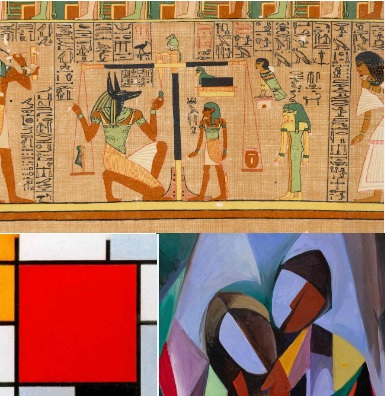Why Traditional Art Still Inspires Modern Artists

- Country:
- United States
Traditional art has always held a significant place in the cultural and historical narratives of societies around the world. Today, as modern artists seek to create unique and compelling works, many are looking to these time-honored traditions for inspiration. This fusion of the old and the new is leading to an exciting evolution in the art world, where traditional techniques and motifs are being reinterpreted in contemporary contexts.
Folk Art's Enduring Legacy
Folk art is often characterized by its use of vibrant colors, simple forms, and themes that reflect everyday life and communal experiences. These elements are increasingly being incorporated into modern artworks, as artists seek to connect with their heritage and bring a sense of authenticity to their creations.
By incorporating traditional motifs and methods, these artists are not only preserving their cultural heritage but also providing a fresh perspective that resonates with modern audiences. This blend of tradition and innovation is evident in various art forms, including painting, sculpture, and digital art.
Mixed Media and Contemporary Indian Art
In India, the rise of mixed media art is a testament to the blending of traditional and modern influences. How contemporary Indian artists are embracing both traditional techniques and new materials to create innovative works? Mixed media art involves combining different artistic mediums, such as painting, sculpture, and digital art, to create complex, layered pieces that offer a rich visual experience.
Indian artists are drawing inspiration from traditional art forms like Madhubani and Warli paintings, which are known for their intricate patterns and vibrant colors. By integrating these traditional elements with modern materials and techniques, artists are creating works that are both rooted in tradition and reflective of contemporary society. This approach not only honors the past but also pushes the boundaries of what art can be.
Ancient Egypt's Lasting Influence
The influence of ancient Egyptian art on modern creations is another fascinating example of how traditional art continues to shape contemporary practices. The aesthetic principles of ancient Egypt, characterized by its detailed iconography and symbolic motifs, have left a lasting legacy in various fields, including fashion and design.
Modern designers often draw inspiration from the rich visual language of ancient Egypt, incorporating elements such as hieroglyphics, pharaonic symbols, and the use of gold and other precious materials. This timeless influence is evident in everything from high fashion collections to interior design, where the grandeur and mystique of ancient Egypt are reimagined in a modern context.
The New Ink Movement in Hong Kong
In Hong Kong, the New Ink Movement is a striking example of how traditional art forms are being revitalized in contemporary settings. It explores how artists are reinterpreting the traditional Chinese art of ink painting, which dates back thousands of years, in new and innovative ways.
The New Ink Movement combines traditional techniques with modern aesthetics, resulting in artworks that are both familiar and fresh. Artists are experimenting with new materials, such as acrylics and digital tools, to create pieces that maintain the fluidity and expressiveness of traditional ink painting while incorporating contemporary themes and styles. This approach allows them to honor the historical significance of ink painting while making it relevant for today's audiences. These modern interpretations often explore current social issues, personal identity, and the rapidly changing urban environment, adding layers of meaning to the traditional art form.
Moreover, the New Ink Movement is not just limited to visual art; it also extends to performance and installation art. Artists use large-scale installations and multimedia presentations to immerse viewers in the experience, blending the old with the new in captivating ways. This dynamic and innovative approach to traditional art ensures that the legacy of ink painting continues to thrive in a rapidly evolving cultural landscape.
The influence of traditional art on modern creations showcases the enduring legacy of cultural heritage and the innovative spirit of contemporary artists. By merging age-old techniques with modern themes, artists celebrate and preserve our shared cultural history.
Also Read: How AI and Digital Tools Are Preserving Cultural Heritage
- READ MORE ON:
- Traditional art
- painting
- sculpture
- digital art
- Modern artists
- Folk art influence
- Contemporary art
- Mixed media art
- Indian art
- Madhubani paintings
- New Ink Movement
- Chinese ink painting
- Modern art techniques
- Traditional techniques in modern art
- Cultural heritage in art
- Warli paintings
- Ancient Egyptian art
- Egyptian influence in fashion










